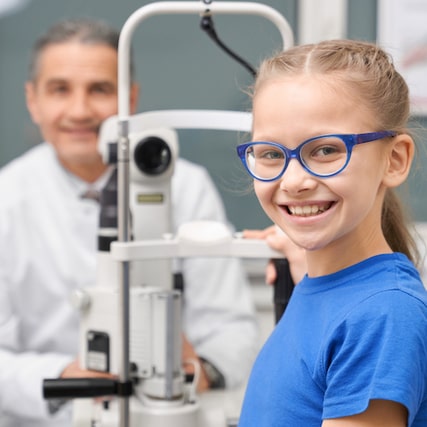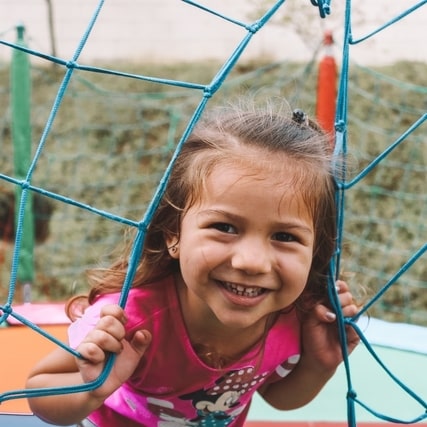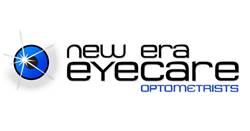
Bring Your Kids to Our Clifton Eye Doctors for Dry Eye Treatment!
Most people associate dry eye with middle-aged adults, typically women. Yet in fact, dry eye is currently one of the most common complaints we hear from all our patients. With an estimate of nearly 5 million people in the United States suffering from dry eye syndrome, that makes perfect sense! Of this huge number, children comprise a small percentage of the sufferers.
Although the condition is rarer in kids, it is just as painful and irritating for our younger patients and they don't usually have the life experiences to help them cope with it like most adults do. The pain and discomfort can be frightening and have a long term negative impact on their development if left un-diagnosed and untreated. In order to determine the best dry eye treatment for each individual, our caring and knowledgeable optometrists will perform a thorough and gentle eye exam on both adults and kids of all ages.
Effects of Dry Eye on Kids
Given that learning for children is primarily done visually, dry eye syndrome can make it challenging for kids to perform well in school. Burning, itchy and irritated eyes, along with constant blinking, interfere with focusing in the classroom. Regular daily activities, such as reading, using a computer, and playing sports become extremely challenging which will impact on their ability to learn and do well in school.
What causes dry eye in children?
A range of reasons can be responsible for your child’s dry eyes.
- Conjunctivitis (pink eye) can lead to a type of dry eye
- Severe allergies, with dryness caused by aggressive antihistamine use
- Nutritional deficiency, namely a low intake of omega-3 fatty acids
- Extended use of smartphones and other digital devices, which can lead to reduced blinking
- Extended contact lens wearing
- Emergency eye care for children


How do we diagnose kids with dry eye in Clifton?
Just like adults, kids need to be tested for dry eye to reach a firm diagnosis. In addition, we use the information from diagnostic procedures to help design the most effective dry eye treatment plan.
With young kids, it can be difficult to use the Schirmer test, which measures tear quantity, because they often resist having a strip of paper put in their eyelid! They’ll start blinking immediately, which causes reflex tearing and inaccurate results.
One test that we may perform is the TearLab osmolarity measurement. Using a tiny sample of tears, the device analyzes osmolarity (salt) levels. This provides significant objective information about the health and stability of the protective tear film, and results generally correlate with the severity of dry eye syndrome. TearLab is quickly becoming the gold standard for diagnosing dry eye syndrome.
We may also administer a TBUT test (Tear Break Up Time) to measure how fast tears evaporate. During this procedure, our optometrist will insert fluorescein dye to check the rate at which tears deconstruct. This is a direct way to assess tear quality.
Eye Allergies & Dry Eye
Many children are allergic to typical airborne irritants, such as pollen, dust, mold and pet dander. In addition, cosmetics and some brands of artificial tears can also be bothersome. When your kid’s eyes come into contact with the offending allergen, they may become swollen, red, itchy and dry. The best treatment is to avoid the allergen!
Yet, we know avoidance isn’t always possible. If your child suffers from eye allergies and the annoying symptoms of dry eye, our optometrists can help. Please schedule an appointment for your child so we can offer relief from these painful symptoms.
Artificial tears and antihistamine eye drops, which are both common remedies used for eye allergies, can lead to dry eyes in some people. If this happens, we will evaluate your child’s condition to recommend alternate treatment for eye allergies.


Dry Eyes & Technology
One of the first questions we ask kids who present symptoms of dry eye syndrome is How many hours a day do you spend gazing at an electronic screen? As digital gadgets like mobile phones, tablets, computers and televisions become more affordable, the number of kids with a device at their fingertips (for hours each day!) has grown exponentially. The downside to having high-tech children is that high-tech health problems often arise, such as dry eyes.
Regardless of whether your kid is reading, watching, texting or gaming, staring at an electronic screen leads to a reduction in blinking and this can dry the cornea. When this happens, our eye doctors may advise lubricants to restore moisture to the eye. We also encourage kids (and their parents) to take a break at least every half-hour, in order to rest the eyes.
Treating Your Child’s Dry Eye at Home
Many actions can be taken at home to alleviate dry eyes. Some helpful suggestions include:
- Have your child wear sunglasses to protect against wind, dust and the drying sun
- Use a humidifier in your kid’s room
- Do not place a fan near your child’s bed
- If your child wears contact lenses, supply him or her with rewetting drops
- Use artificial tears regularly - without preservatives
- Avoid smoke filled areas
- Place a warm compress on your kid’s eyelids gently every day (for about five minutes); this can help increase natural tear production
In addition to trying these tips, it’s a smart move to bring your child into our eye care offices at Clifton, Virginia for a professional eye exam. Our optometrists have loads of experience treating kids with dry eye, and we’ll work with your child patiently to restore comfortable eyesight.
Even more than the newest smartphone, vision is one of your child’s greatest possessions and needs to be cared for properly! That device will be replaced in a few years but your children's eyesight needs to last for life!

